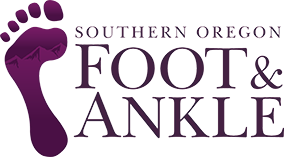 The bad news about a bunion is that, once you notice you have one, the proverbial horse has likely already left the barn. You can’t really prevent a bunion when you see it – it already exists!
The bad news about a bunion is that, once you notice you have one, the proverbial horse has likely already left the barn. You can’t really prevent a bunion when you see it – it already exists!
But what if you’re at high risk of developing a bunion (take a look at how many run in your family), or you just want a small bunion to stay small? Then you are in a relatively good position to make a difference!
While a bunion in progress can’t be reversed by anything short of a surgical procedure, there are still plenty of simple steps you can take to slow that progress, or maybe even preventing a bunion from forming in the first place.
We can also provide you additional advice, support, and guidance along the way no matter where you start your bunion prevention journey, so don’t hesitate to reach out to us to do so!
Make the Right Choices for Footwear
The choice of what to put your feet in all day won’t necessarily cause a bunion directly, but it can surely contribute to making any bunion-causing instability in the big toe joint worse.
The shape of your shoes can greatly impact the amount of pressure that is placed on your forefoot, toes, and joints. And just like how leaning on a loose fence post all day will eventually cause it to shift, putting undue pressure on the area of a potential bunion can cause it to progress as well.
When choosing shoes to spend your days in, opt for:
- Low heels. Having a little bit of a rise from toe to heel is typically fine, but the higher it goes (especially over 2 inches), the more that your weight is shifted against the front of your foot.
- Wide, roomy toe boxes. Always ensure your toes have enough room to wiggle and are not crammed against each other or the inside of the shoe. Any narrowed or pointed toes should be avoided, and there should always be at least a half-inch of space between the tip of your longest toe and the front end of the shoe.
- Comfort. A shoe that fits all the criteria above still won’t serve you well if you aren’t comfortable wearing it. Discomfort can affect the way you walk, which can shift the way you carry your weight without even realizing it.
Stretch and Strengthen Your Feet
Mobility, endurance, and range of motion are important elements to build and maintain if you want to fight back against joint instability and bunion progression.
Simple exercises that focus on toe strength and flexibility can pay off over time, and most of them can be easily performed while sitting. Here are a couple of examples:
- Toe grip and pickup. While sitting, place a small bowl on the floor in front of you, and 10-20 marbles on the floor around that. Grip each marble with your toes to pick it up and deposit it in the bowl. If you don’t have these materials, you can work by gripping a golf ball or pen instead.
- Toe circles and figure eights. While sitting, lean over and gently grip your big toe. Slowly circle the toe clockwise 20 times, then reverse direction another 20 times. Complete 2-3 sets on each toe. Figure eights are performed in the same manner, just with a figure-eight motion instead of circles. Perform sets of 10 figure eights instead of 20.
We can help you determine stretches and exercises that may provide even greater benefits for your particular situation.
Make Sure You Have Time Off Your Feet
If you are on your feet for hours at a time – whether due to work, hobbies, or whatever else life throws your way – the pressure on your feet can add up.
If you are able, take a few minutes each hour to sit and take a load off, or at the very least move a little bit if you’ve been standing in one place. If you are required to spend a lot of time in one spot, try to do so on softer flooring if possible. Standing on an anti-fatigue mat can also be helpful.
See Us and Stay Up to Date on Your Foot Health
There is a lot you can do to help prevent a bunion at home, but seeing a podiatrist will help you see and address the whole picture more effectively – as well as keep track of the progress of your feet over time and take prompt preventative action whenever needed.
We can provide a thorough examination of your foot structure and medical history to identify any factors that might need special attention or focus. We can also provide advanced treatments such as custom orthotics to provide exact support for your feet and joints in ways that can’t be found otherwise.
But remember what we said about horses and barns in the beginning. If you have suspicions about a potential bunion or your bunion risks, do not wait for the problem to worsen before coming to see us. The sooner a problem is identified and addressed, the better the overall effect it can have on preventing a bunion or slowing its progression!
Schedule an appointment with our office in Medford by calling (541) 776-3338. Or, if you prefer to contact us electronically, simply fill out the contact form and our staff will respond to you during standard office hours.
